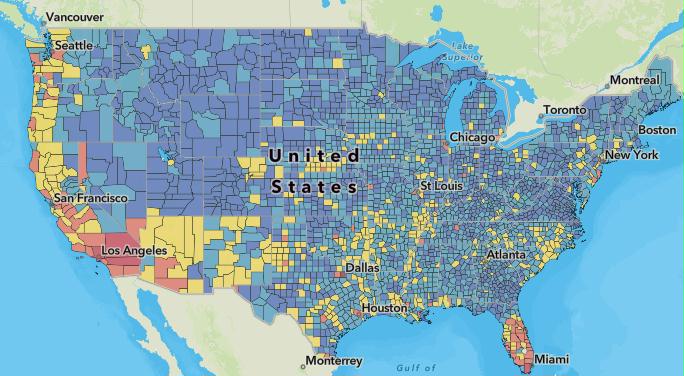
Preface. I suppose that if you’re trying to figure out where to survive peak oil, the hazards might be something to consider. This isn’t the greatest tool in the world. To use it, select a county in the Counties tab to see what the risks are, they include Avalanche, Coastal Flooding, Cold Wave, Drought, Earthquake, Hail, Heat wave, Hurricane, Ice Storm, Landslide, Lightning, Riverine flooding, Strong wind, Tornado, Tsunami, Volcanic Activity, Wildfire, Winter Weather.
Alice Friedemann www.energyskeptic.com author of “Life After Fossil Fuels: A Reality Check on Alternative Energy”, 2021, Springer; “When Trucks Stop Running: Energy and the Future of Transportation”, 2015, Springer, Barriers to Making Algal Biofuels, and “Crunch! Whole Grain Artisan Chips and Crackers”. Podcasts: Collapse Chronicles, Derrick Jensen, Practical Prepping, KunstlerCast 253, KunstlerCast278, Peak Prosperity , XX2 report
***
The National Risk Index.
The Federal Emergency Management Agency has calculated the risk for every county in America for 18 types of natural disasters, such as earthquakes, hurricanes, tornadoes, floods, volcanoes and even tsunamis. And of the more than 3,000 counties, Los Angeles County has the highest ranking in the National Risk Index.
FEMA’s other 10 riskiest places are three counties in the New York City area — Bronx, New York County (Manhattan) and Kings County (Brooklyn) — along with Miami, Philadelphia, Dallas, St. Louis and Riverside and San Bernardino counties in California.
Loudoun County, a Washington, D.C. outer suburb, has the lowest risk of any county, according to FEMA.
FEMA’s index scores how often disasters strike, how many people and how much property are in harm’s way, how vulnerable the population is socially and how well the area is able to bounce back. And that results in a high risk assessment for big cities with lots of poor people and expensive property that are ill-prepared to be hit by once-in-a-generation disasters.
While the rankings may seem “counterintuitive,” the degree of risk isn’t just how often a type of natural disaster strikes a place, but how bad the toll would be, according to FEMA’s Mike Grimm.
Oklahoma is twice as likely to get tornadoes as New York City, but the damage potential is much higher in New York because there are 20 times the people and nearly 20 times the property value at risk, FEMA officials said.
“It’s that risk perception that it won’t happen to me,” Grimm said. “Just because I haven’t seen it in my lifetime doesn’t mean it won’t happen.”
That sort of denial is especially true with frequent and costly flooding, he said, and is the reason only 4% of the population has federal flood insurance when about one-third may need it.
Disaster experts say people have to think about the big disaster that happens only a few times a lifetime at most, but is devastating when it hits — Hurricane Katrina, Superstorm Sandy, the 2011 super outbreak of tornadoes, the 1906 San Francisco earthquake or a pandemic.
